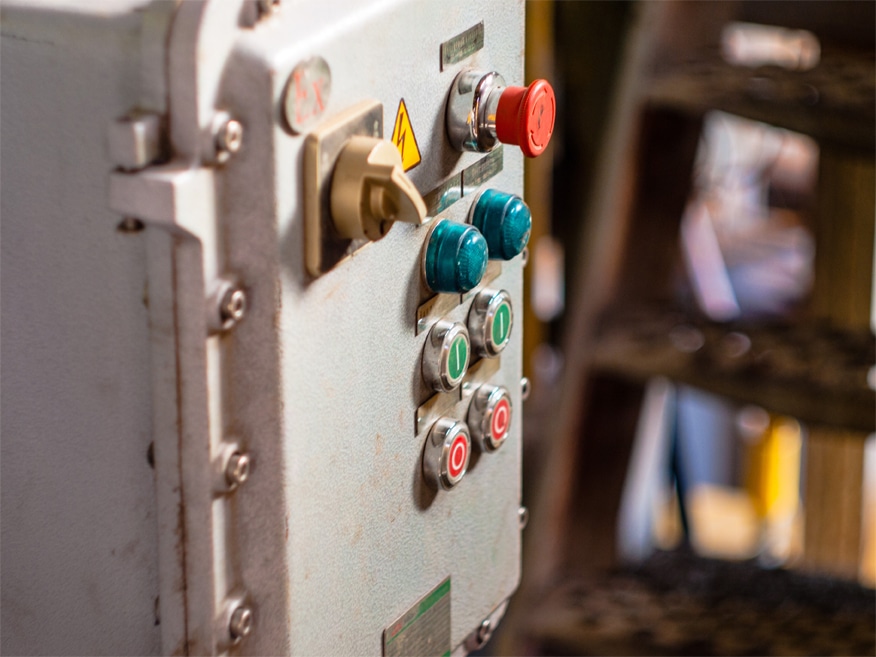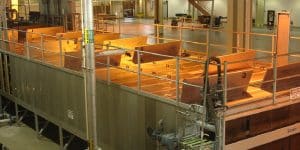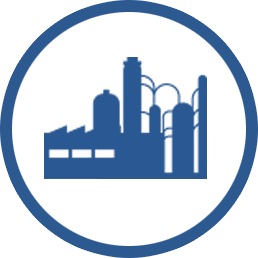If you have older equipment with explosion relief doors it may be time they are replaced. And if your processes, or surrounding environment, have changed in any way since the door was installed — that can be a reason to upgrade as well.
Commissioning a replacement explosion relief door may be as simple as buying a duplicate of what’s already in place. Alternatively, staying safe may require a larger door or one with upgraded performance. Read on to learn about what to consider.
REASONS FOR REPLACING AN EXPLOSION RELIEF DOOR
A door must either be repaired or replaced if it’s unable to relieve the pressure of an explosion. The major deciding factors are:
- Age/wear and tear
- Damage sustained through explosion events
- Changes in the process, equipment, or surroundings being safeguarded
AGE/WEAR AND TEAR
An older door may not function properly if an explosion occurs. Faulty seals, worn springs, and corroded hinges are just some of the problems that can develop over time.
A typical lifetime is 15 years, although it can be less if the door is located in a corrosive or particularly harsh environment. Alternatively some doors—particularly those in sheltered or indoor locations—can last as long as 30 years.
DAMAGE
In a perfect world, any damage would be reported as soon as it occurs. The reality, of course, is different. People sometimes use doors as hand or footholds when climbing up on equipment, or even might have to stand on them. Sometimes the doors will get struck by a forklift truck or a mobile hoist.
As precision-engineered devices, any damage to the hinges, frame, latching mechanism, seals, or the door itself could affect operation. This is why it’s important to inspect explosion relief doors periodically.
CHANGES IN THE PROCESS, EQUIPMENT, OR SURROUNDINGS
When new, the door or doors were designed for a specific Pmax—the peak pressure developed by an “optimum” mixture exploding inside the equipment. Any changes like the powder being handled—from composition to particle size distribution—will affect both the deflagration risk and the Pmax.
Changes in the equipment will also affect the explosion risk. This ranges from using fans and filters of different efficiencies to those initially installed, to the removal of stiffening members, or changes to duct dimensions. There’s also a possibility of corrosion reducing the strength of external parts of the structure.
Explosion relief doors are designed to let a fireball safely leave the equipment or structure. However, it’s not uncommon for changes to be made in the surrounding area. Sometimes ducting or pipework is installed in the area intended for the door opening, or factory layout changes may put workers closer to the door than was initially intended.
Should an explosion occur, any of these changes could result in the door not functioning as expected. To avoid the risk of injury and damage, changes in the process, the equipment, or the surroundings should always prompt a review of whether it’s time to replace an explosion relief door.
REPAIR OR REPLACE?
When nothing has changed in the application, and the problem is wear or damage, refurbishment may be an option. This requires an assessment carried out by an expert in explosion relief doors.
If refurbishment is feasible, it will cost less than replacing the door. However, it will also mean taking the equipment that’s being protected out of service for a period of time. To avoid extended downtime some equipment users keep a spare door in inventory to use for a quick replacement. The door that was removed can then be refurbished for use at a later date.
BUY THE SAME AGAIN
When the door is beyond repair, but no changes are needed, the logical approach is to buy a duplicate. This assumes, however, that the original specifications and calculations are all available for review. A well-organized shop may be able to produce them, but personnel turnover and reorganizations often lead to things going astray.
Attempting to copy an existing design is unsafe. Without details of either the pressure calculations or the springs and other components used, the resulting door will not have the necessary operating characteristics. It could release at a lower pressure than needed, but more likely, will fail to provide relief when an explosion does occur.
DEALING WITH CHANGED CONDITIONS
A change in particle size distribution or composition requires the area provided for explosion relief to be re-evaluated. Other reasons include an increase—or reduction—in airflow rates and alterations to the equipment being protected. If any of these apply, the risk must be reassessed and the replacement explosion relief doors should be designed accordingly.
SEEK EXPERT ADVICE ON THE REPLACEMENT OF EXPLOSION RELIEF DOORS
Smart Machine Technologies is the expert in the engineering of explosion relief doors.
If you’re using older equipment with doors that need attention, ask us for help. We can determine the feasibility of refurbishing rather than replacing, engineer any new doors needed, and advise on the safest and most cost-effective approach to take.
For more information, click below.






 Contract
Contract Food & Bev
Food & Bev